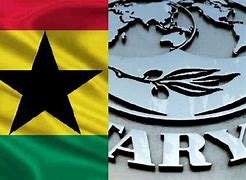According to ratings agency S&P in a research report, economic growth in key Sub-Saharan African economies will slow this year as weaker global growth makes the backdrop less favourable and high interest rates deter investment.
The ratings agency said it now forecasts the gross domestic product of eight Sub-Saharan African economies it tracks would expand 2.9% in 2023, down from 3.4% in 2022.
However, its latest forecast is slightly more gloomy than a research report from June last year that predicted 2023 growth of 3.2% for seven African economies.
This year’s report included economic forecasts for Angola, Democratic Republic of Congo, Ethiopia, Ghana, Kenya, Mozambique, Nigeria and South Africa. S&P’s 2022 report did not feature Mozambique forecasts.
“The economic environment remains far from growth friendly, reflecting elevated policy uncertainty and above-average systemic financial stress.”
S&P
S&P noted that policymakers face a tricky trade-off between public debt management, especially given higher interest rates, and macroeconomic stability.

However, the end of the COVID-19 pandemic, the reopening of tourism and services sectors, and falling food and fuel prices should bring some relief, S&P added.
S&P now forecasts South Africa’s economy will grow 0.7% this year, down from a 1.6% forecast given in June 2022 because of an intensifying electricity crisis.
Democratic Republic of Congo and Ethiopia were poised to be the growth leaders in 2023 with GDP expansions of 6% this year, supported by mining in Congo and a recovery in investment in Ethiopia after a ceasefire between the government and Tigray forces, S&P said.
Looking to 2024, S&P projected average growth of 3.4% in the eight countries.
Economic Growth in Sub-Saharan Africa
Meanwhile, economic growth in Sub-Saharan Africa (SSA) slowed to 3.6% in 2022, from 4.1% in 2021; and economic activity in the region is projected to further slow down to 3.1% in 2023. According to IMF, the persistent sluggishness of the global economy, declining yet high inflation rates, and challenging global and domestic financial conditions amid high levels of debt explain the downgrade.
Growth is estimated to pick up to 3.7% and 3.9% in 2024 and 2025, respectively—thus signaling that the slowdown in growth should be bottoming out this year. Growth conditions, however, remain insufficient to reduce extreme poverty and boost shared prosperity in the medium to long term.
The slow recovery of per capita income growth, at 1.2% next year and 1.4% in 2025, still falls short of accelerating poverty reduction to the region’s pre-pandemic path.
The growth In SSA is not uniform across subregions and countries. The GDP growth of Western and Central Africa is estimated to decline to 3.4% in 2023, from 3.7% in 2022, while that of Eastern and Southern Africa declines to 3.0% in 2023, from 3.5% in 2022. The region’s performance is still dragged down by lower long-term growth in the largest countries on the continent.
Economic activity in South Africa is set to weaken further in 2023 (0.5%) as the energy crisis deepens, while the growth recovery in Nigeria for 2023 (2.8%) is still fragile as oil production remains subdued. Among the 10 largest economies in SSA, which represent more than three-quarters of the region’s GDP, eight are growing at rates that are below their long-term average growth, including Sudan, Nigeria, Angola, and Ethiopia.
READ ALSO: Jordan’s Crown Prince Weds Rajwa Alseif



















